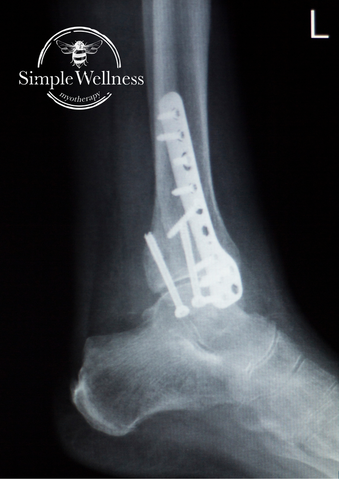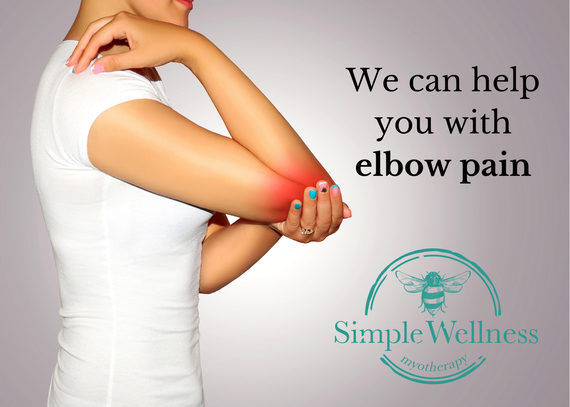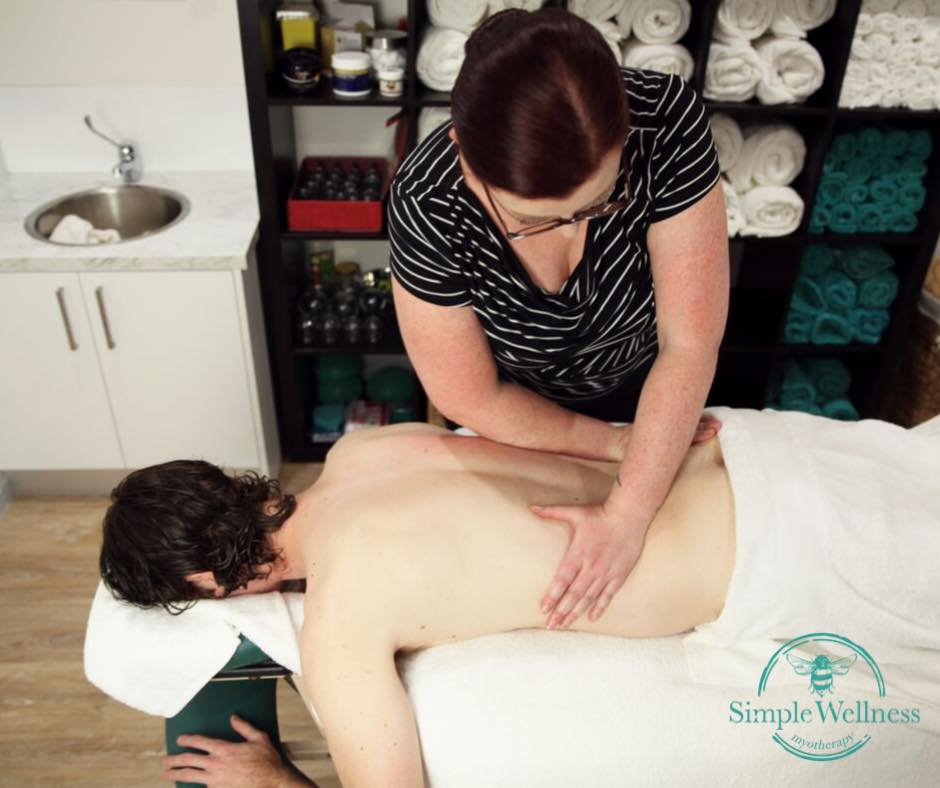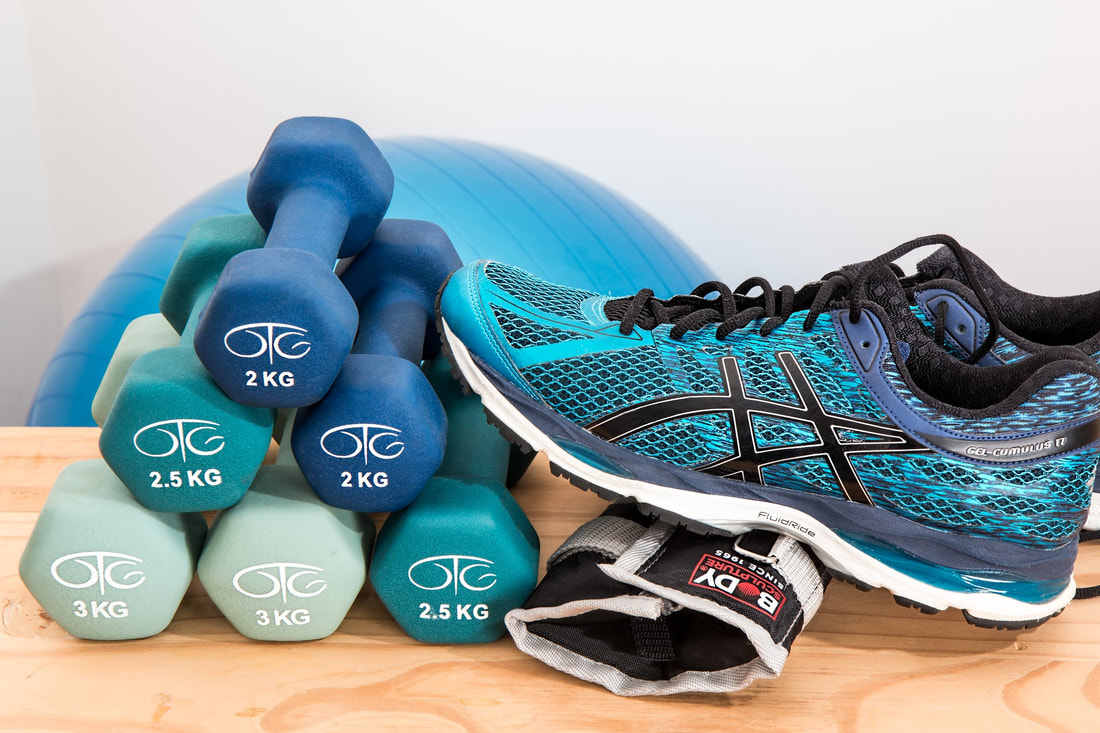|
By Rachael Bird, Myotherapist
The time it takes for your body to start feeling better after seeing a myotherapist can vary depending on several factors, including the nature and severity of your condition or discomfort, the specific techniques used by the myotherapist, and your individual response to treatment. Here are some general considerations:
Predicting how long your body will take to recover from injury or pain can be difficult, because each individual person will have many different factors that can influence their pain.
Your recovery time will depend if your pain is from an acute or chronic issue. We use the terms "acute" and "chronic" to describe your injury or pain type - acute being a new, fresh injury, usually where tissue damage has occurred; and chronic being a longer term condition or pain that continues well after expected tissue healing should have occurred. Acute injuries can include things like ankle sprains, hamstring tears, shoulder dislocations. Usually they happen quickly and are immediately obvious that something is wrong. Maybe you've lifted something too heavy in your gym routine and felt a twinge of pain in your back as a muscle has strained, or you've missed the last step and felt a sharp shock of pain in your hip or knee. High impact blows can also cause acute injuries, like if you have a fall, get in a car accident, or get kicked from a horse. Chronic pain can stem from an originally acute injury. Its common for people to have ongoing pain or sensitivity after an injury that causes a lot of damage. Chronic pain can also be part of many health conditions, like hypermobility and Ehlers Danlos Syndrome, Fibromyalgia, Multiple Sclerosis, and other conditions that affect your nervous system or connective tissue. Chronic pain also describes pain that comes from repetitive patterns of movement or positioning, usually starting as a mild irritation that can build up to be very painful, like De Quervains or "Mummy Thumb" which a lot of new parents experience as intense wrist and thumb pain from holding and feeding their new baby. As a very generalised observation, acute injuries tend to follow fairly predictable recovery pattern as long as normal tissue healing occurs. In fact, the pain of an acute injury can often go away even before the tissue healing has completed, like in the case of a mild ankle sprain where you may be able to weight bear and return to normal movement within a week, even if the tissue around the ankle is still in repair mode. The severity of the acute injury will usually give us an indication of your expected healing time - a mild injury takes a shorter time to recover than a severe injury, this follows our common sense understanding even without medical training. But what about chronic injuries or pain? How can we estimate how long an old injury will take to feel better? And importantly, can we realistically expect long term pain like a very old injury or pain from a lifelong disorder or disease to fully recover? This is where pain starts to become complicated, because in chronic pain patients there are lots of factors involved in the pain outside of damaged muscles, joints or nerves. Chronic pain in one area of your body can lead to pain developing in other areas when your body tries to find different ways of getting things done. If gripping a heavy object becomes painful in your wrists, you may find yourself balancing it on your forearms and tilting backwards from your pelvis instead. As a short term work around this might be ok, but over time you might find yourself with chronic wrist pain AND chronic lower back and hip pain. Unfortunately, if you have a few "layers" of pain areas, this can mean that its likely to take longer to unravel some of the patterns that have lead your body to being in pain. Chronic pain tends to be unpredictable in how long it may take to resolve. For people with pain stemming from lifelong conditions like genetic disorders, autoimmune disease or neurological disorders, the pain is likely to come and go in flares, and our aim for these people is to reduce the severity and frequency of the flares that are a part of their condition. What other factors can contribute to how quickly you recover? Adaptations to movements and positions: Firstly, we need to identify movements or positions you currently do that either exaggerate or relieve your pain. Some of these will be easier to adapt than others - if you notice sitting longer than an hour increases your pain, an easy adaptation may be to get up every 30-60 minutes for a brief stretch. If you spend the majority of your day sitting at your computer, we can look at starting and ending your day with a back extension exercise to decompress your lower back. If we find some movements that relieve your pain, we can look at ways of increasing your time spent doing those movements. We know that we won't be able to change all of the repetitive movements and actions that are needed in your daily life at work and at home, so realistically understanding that some of those things are contributors to your pain means we need to focus on the things we can influence so we can reduce the impact of the things we can't change. There are lots and lots of options for changing some of the movement and position habits your body has built up, and our therapists can help with some suggestions during your appointment. Exercise: Finding a suitable type of exercise for your pain can be very helpful in building strength around the area and in stimulating your body to release its own brand of feel good hormones and neurotransmitters that reduce pain sensations. Exercise might sound very overwhelming to start off, especially if you have a lot of interconnected areas of pain, so our therapists will start you at an appropriate level for where you are at. That might be some mild stretches, a gentle walk or swim, or even a visualisation of doing certain movements. Diet/Nutrition: What you eat influences how your body repairs and recovers. If you have food sensitivities or intolerances this can also effect your bodies inflammatory response - the more inflammation, the more sensitive our nervous system is to pain. If you were already eating a good diet prior to your injury, you are likely in a better position to recover quicker than someone who was eating nutrient-poor food or a diet that caused inflammation. A nutritionist may also be able to recommend supplements that can support your bodies natural healing processes. Fitness & General Health: You may be more likely to have an easier recovery from injury if you were in fairly good health and physical condition before your injury. Your recovery may be slower if you have pre-existing health concerns, including things like diabetes or autoimmune disease. Its never too late to start working towards a healthier lifestyle! Sleep: Good sleep is crucial to good healing. Pain can make sleep very difficult, and this can become a bad cycle of intense pain leading to poor sleep, resulting in feeling fatigued, which causes pain to increase, and so on. Breaking this cycle and getting some proper rest can help with recovery. Using extra pillows to support your body may allow you a longer and deeper sleep. There are also lots of great sleep apps or meditations that some people find useful in falling asleep or getting back to sleep if you wake up in the night. Speak with a nutritionist or pharmacist about night time supplements that can help aid with sleep. Nervous System Health: Chronic pain is often just as much about your nervous system as it is about your musculoskeletal system. This means if you are highly anxious, stressed, depressed, or just have a lot on your plate right now, that your pain levels may be higher than normal. The nervous system controls your entire body, so while we're not saying "your pain is in your head, you're making it up!" what we are saying is that if your nervous system is working overtime then its much more likely that your pain will be noticeable even in response to small actions. Think of it like a kettle that has just boiled, it takes much less time to reboil the kettle because its already hot. The nervous system is similar, it will take much less action for your nervous system to turn up the volume on your pain because its already on high alert. Finding ways of supporting your nervous system is crucial for long term chronic pain conditions. This is also why medications for anxiety and depression are often prescribed for people with ongoing pain. There are lots of natural or herbal supplement options available through Naturopaths and health stores. Setting a nervous system health routine for yourself is also a hugely valuable part of managing stress and overwhelm, and this might include things like mindfulness, meditation, relaxation, affirmations, or anything else that helps you to tone down nervous system activity. Self Care Tools: Treatments with your practitioner are great, but having the tools and know-how to apply treatment principles at home goes a long way to helping you take charge of your recovery. We can teach you how to use a range of tools for releasing tight spots in your body so that you have some tricks up your sleeve for between treatments. Treatment: Get the type of treatment that your body responds to. Some people respond best to hands on treatments like massage, cupping and dry needling. Some people go better with active exercise based treatments. Our therapists can advise you of the treatment types that have been reported to work best for your type of pain, but ultimately each individual body can react differently, and we'll work towards finding the best combination of treatment techniques for you. Be aware that trying too many treatment types at once for the same issue can make it very difficult for any of your health practitioners to determine which treatment is effective. This is also why we'll often pick a small number of Myotherapy techniques to use in each treatment, because if we use absolutely everything we know all at once, its very hard to know what worked and what didn't. Go into your first treatment expecting that it might take your body a little while to start making long term changes, especially if your pain has been there for a long time and if repetitive movements and positions seem to be a big part of your pain hanging around. Try your first appointment with us for $97 (normally $115) Book an appointment with us now. Does this sound familiar?
These can be signs of hip bursitis, which is an inflammatory condition that can be a very common cause of hip pain. The good news is that we help people with this all the time, and we can get you started on a treatment program to help reduce the pain and build up the strength in your hip! What is Bursitis?
Bursitis is the name of a condition where the bursa in your joints become inflamed. Bursa are the fluid-filled sacs that help cushion joints and reduce friction as the joint moves. Healthy bursa are important in pain free movement. When the bursa becomes inflamed it swells and becomes highly sensitive. The joint doesn't move easily, and the muscles surrounding it can become painful and tight trying to protect the joint. Bursitis can cause acute pain that increases with physical activity. If the inflammation remains active for a long time, the pain can progress to a chronic state. What causes hip bursitis? The most common causes of bursitis are things like overuse or strain on the hip joint. This can happen through a high level of exercise or activity, or through repetitive unbalanced activities like holding a baby on one hip, or leaning your weight to one side to avoid pain in other areas like your lower back, knee or ankle. Other causes can be less common things like infection or gout within the joint. People with autoimmune conditions like rheumatoid arthritis can be more vulnerable to developing this inflammatory condition. How can we help? Remedial massage and myotherapy can help relieve painful symptoms of hip bursitis. We can reduce muscle tension around the hip joint, and assess the other areas above and below the painful hip so that we can address any issues that are contributing to your bursa becoming irritated. Taping for stability and support can be very useful, and can help relieve pain for longer. We can give you a program of exercises to gradually strengthen your hip without increasing the irritation. Book a time with us to get the ball rolling. Should I see a doctor? If your hip pain has been ongoing for quite some time, it can be a good idea to check in with your doctor. Your GP can advise you if a course of anti inflammatory medication will be helpful for you, or you can ask your pharmacist for an over the counter recommendation for symptom relief. We're lucky to be located inside Together Medical Family Practice in Knoxfield, where you can get access to a fully Bulk Billed GP in the clinic with us and an understanding pharmacy team downstairs. Have you recently been diagnosed with bursitis, but aren’t quite sure what that means? We’ve got you covered. Here are the basics you want to know about bursitis and what can be done about it. What is bursitis?
Throughout your body, you have bursa – small fluid-filled sacs that prevent friction between your bones, tendons and muscles around your joints. Bursitis is when a bursa becomes irritated and inflamed. Bursitis commonly occurs in the shoulder, elbow or hip. However, you can experience bursitis in any bursa. The most common symptoms include pain, swelling and stiffness of the joint. Pain will often increase during the night time, and becomes worse when you move the joint. What can cause bursitis? There are many factors that can cause or contribute to bursitis. Some of the most common include:
How is bursitis diagnosed? This depends on who you see. Any health professional will take a case history and do a physical examination. If you seek help from your doctor, they may order imaging tests to rule out other problems that might be causing your symptoms, or they may order a test of the fluid from your bursa to see if there is an infection. How is bursitis treated? The focus of bursitis treatment depends on what caused the problem in the first place. But it’s likely that treating your bursitis will include:
If the cause is an infection, your doctor may prescribe antibiotics to resolve the infection. A small percentage of people may be recommended surgery if other treatments have been unsuccessful. How myotherapy can help with bursitis When it comes to bursitis, there are a few steps that your myotherapist will take. Firstly, we will assess the joint itself for swelling, inflammation, pain and movement. Once we know what we’re working with, we’ll put together a treatment plan to address the issues. A treatment plan for bursitis often includes:
Another useful therapy that may be discussed is hydrotherapy – exercises and movements performed in warm water. This can reduce pressure on the joint, making therapeutic movements easier and less painful. If you’re dealing with bursitis, the team at Simple Wellness Myotherapy are here to help. To book an appointment with one of our qualified myotherapists, click here. Have you just had surgery, or are booked in for surgery in the near future? Wondering how to deal with the pain that you experience after the procedure is finished? Pain management can make a big difference for your recovery and overall wellbeing. Let’s take a look at how you can manage pain after surgery. Why is post-surgery pain management important? Getting a good hold on your pain levels after surgery is important for your comfort. But there are a few other reasons why managing your pain is essential for recovery. Some of the most important reasons include:
How to manage your pain post-surgery Looking for ways to deal with your post-surgery pain? Every case is unique, but there are some simple tips you can try to relieve your pain. Follow your surgeon’s advice Your healthcare team will give you guidance on how long before you can do certain tasks, and how frequently to take your medication. These are given to you for a reason – to manage your pain and healing! Make sure you follow your surgeon’s advice, and seek their consultation if you need to make any adjustments. Find a way to relax Pain can be taxing for the nervous system. But relaxation techniques such as guided meditation may be helpful for controlling the sensation of pain. There are plenty of free guided meditations online and on YouTube to try. If meditation isn’t your thing, find other ways to relax such as reading or spending time in nature. Focus on resting frequently and deeply Your body does its best healing when it is resting. Even if you feel that it’s ‘lazy’, your body is actually hard at work when you’re taking a nap or sleeping! Make sure you prioritise rest that is both frequent and high-quality. Aim for 8-9 hours of sleep per night as a minimum. If you’re not back at work, switch off your alarm and allow yourself to wake naturally. You might also like to make time for a nap in the afternoon, even it’s only a quick 20-minute rest. How myotherapy can support your body post-surgery When it comes to post-surgery pain, myotherapy can offer a variety of support techniques depending on the type of surgery and how long ago your surgery occurred. For example, your myotherapist can:
Here at Simple Wellness Myotherapy, we are experienced in working with a variety of clients who have undergone minor and major surgeries. Our goal is to help you on your journey back to your ‘business as usual’ – whatever that may be! To book an appointment with one of our qualified myotherapists, click here. You’ve been told you have Tennis Elbow, but you don’t even play tennis? The pain can catch you off guard, and make normally simple tasks feel really difficult - opening jars, turning door handles, shaking someones hand, maintaining your grip on something. This type of pain can feel like a deep muscle aching, a stretch in the muscle, sharpness when you move, or a combination of these feelings. Our Myotherapists and Remedial Massage Therapists can help by creating a treatment plan for you that relieves the pain and gives you back your strength and ability to turn, twist and grip again.
Tennis Elbow is a painful condition of irritation and inflammation of the tendons around the outer side of your elbow. Its normal to feel the dull, constant ache throughout the day, and have the pain turn into sudden, sharp or shooting pain when you move your elbow or wrist, or try to grip something or twist a lid or door handle. It can happen if you spend a lot of time doing repetitive wrist movements like typing, using tools, carrying something heavy for a long period of time. We see it with people who play musical instruments too, or video gamers who get so into the game they forget to take a break for hours on end. Our typical treatments for this kind of pain will look at assessing your movement and strength first so we can plan out some short and long term goals. Our short term goals are usually the ones you want the most - to get rid of this awful pain!! But its also important to plan for the long term goals of recovering the strength in the area so that this feeling doesn't come back. A series of hands on treatments can help to reduce the pain and sensitivity in the area, and we'll give you a few movements that help that you can focus on between treatments. This is a pain that tends to respond well to doing some stretch and strengthening movements each day, starting with small easy movements, working up to more challenging or weight resisted ones. The hands on part of your treatment may include some remedial massage, cupping, active release techniques, dry needling, and trigger point therapy. Afterwards we can support your elbow with kinesiotaping to reduce pressure over the joint and tendons. Do you need help with elbow pain? Our therapists are ready to help assess your pain and work with you to create a treatment plan to reduce the irritation and restore your movement and strength. Book your first consultation with us now! Whether you’re an athlete or a weekend warrior, an injury can set you back when it comes to your exercise goals. How you handle an injury can make a big impact on the recovery process. If you want to speed up your recovery and minimise the risk of injury in the future, this is the guide for you.
What to do immediately after an injury So you’re reading this right as you’ve hurt yourself. Props to you for Googling the answer! But on a serious note, it’s good to have the injury assessed by a GP if you suspect a fracture, dislocation or muscle tear. That way, you know right away whether you will need any significant treatment such as surgery or a cast. In the meantime, start with elevating the injured body part. This helps to reduce fluid retention in the area. It also means you’re not on it, so you’re less likely to keep injuring it! Rest and elevation are also a good idea for minor injuries such as sprains and twisted ankles. If you have a pre-made support or brace for the injured part, you can pop it on for some stability and compression. If not, you might like to bandage it if compression feels supportive for you. There is a bit of debate out there about whether heat or ice is best for an injury. Ice is the old-school treatment, and may be useful for reducing pain sensitivity and fluid retention. On the other hand, if there is pain without any swelling, a heat pack or warm bath might help increase blood flow to the area and reduce pain. Once the swelling has gone down This is the time when it’s good to see your friendly local myotherapist. We can’t really help if you’ve just done a significant injury such as a break or a muscle tear. But after the first few days, we can put together a treatment plan to get you back to your everyday life ASAP. Some of the therapies we can offer to help you recover include:
How to support recovery and reduce risk of re-injury Are you ready to jump back into it after an injury? Here are some tips to maximise recovery and minimise your risk of getting hurt again. Start slow – I know you want to jump straight back in, but this is a recipe for disaster! When you’ve been injured, your body part often needs time to strengthen and get back to your pre-injury levels. Begin with low impact versions of movement such as yoga and walking, and build up over a period of 4-12 weeks depending on your injury. Use rest and compression after exercise – if you do find your injured area aching or swelling after exercise, head home to rest and a support or brace. This can minimise the fluid retention and ease any pain you might experience. If you experience sharp or shooting pain, stop – some aches are common as you get back into movement. But sharp, shooting or severe pain is a sign that something is not ok. Stop whatever you’re doing until your pain has been checked out by a qualified practitioner. Eat plenty of nutrient-dense foods – even if your rehab program is perfect, your body can’t recover without the good nutrients you need for healing. Eating plenty of fruit, veggies, nuts, seeds, herbs, spices and high-quality is protein is a good start, according to our nutritionist friend Samantha Gemmell. Work with a myotherapist – a myotherapist can help you with rehab exercises to rebuild strength. But they can also keep you on track with supportive taping and addressing any muscle imbalances. Are you dealing with an injury? Our myotherapist Emily works with people with sports injuries, particularly muscle tears, joint injuries and rehab. Her goal is to get you back to training, events and everyday life as soon as possible while minimising your risk of re-injury. To book an appointment with Emily, head to our booking page and select ‘Emily Wells’ as your practitioner. If you work at a desk for hours on end, you know that it can be uncomfortable at the best of times. Office workers have just as much risk of injury and chronic pain as other more physically strenuous occupations. You may be at risk of issues including back pain, neck pain, repetitive strain injury or RSI and carpal tunnel syndrome.
So how can you minimise your chance of hurting yourself and stay at the top of your game? Our myotherapist Emily shares some of her tips for staying healthy and preventing pain and injury for office workers. Stretch often When you’re focused on your work, you often forget to shift position. Unfortunately, our bodies weren’t designed to stay in a position for hours at a time. That’s why the simplest tip is to stretch whenever you feel stiff, sore or fatigued. Stretching can also help to boost blood flow to the brain, which means you are more focused and productive. You can simply stretch at your desk if needed – stretch out your neck, shoulders and back, and do some circles with your ankles. But you can also do a standing stretch, which brings us to our next tip. Set yourself reminders to move Small amounts of movement throughout the day add up when it comes to preventing office injuries. But when you’re in the zone, you might forget! That’s why it’s useful to set yourself a reminder or alarm on your phone or computer. Aim for at least 1-2 minutes per hour of movement. This might be standing and stretching, going and getting a glass of water, making yourself a coffee or tea, going to the toilet or just walking around the office to get your muscles and joints moving. Give a sit/stand desk a try Desks that can alternate between a seated and standing position have become popular recently. They allow you the best of both worlds – you can sit for a bit, then switch to standing as a break from sitting. Have a chat to your employer about whether you can trial a sit-stand desk. The good thing is that many people find sit-stand desks boost productivity, so employers are often open to them. If you work for yourself or you are the boss, you can hire sit-stand desks and other equipment before purchasing. Make the most of lunchtime It can be tempting to eat lunch at your desk and power through the to-dos. But your lunch and break times are an opportunity to move around and give your muscles and joints a break as well. Get up and get moving. Head to a local park to have your lunch if it’s sunny outside. Grab a coffee from the café around the corner. You can even go for a brisk 5-minute walk around the block at the end of your break to wake up your brain and your body. That way, you’ll go back to work feeling refreshed. Get moving before or after work Some days you won’t get much time to move at work, so make the most of the hours outside of work. Find a way to get your body moving on a regular basis. This doesn’t mean you need to slog away at the gym for an hour every day. You can do some yoga stretches at home, walk the dog or go to the playground with your kids. If you do find yourself too tired to move after work, try getting up 15 minutes earlier and go for a walk around the block before work. It seems counter-intuitive, but exercise actually boosts your energy and relieves fatigue. Even a little bit each day will add up! Get a regular remedial massage or myotherapy treatment Your muscles and joints need care, just like every other part of you. That’s why regular treatments can help to prevent injury and pain. Our desk worker clients find that a treatment every 2-6 weeks helps to relieve tension and pain. Many report that they have fewer headaches, lower stress levels, improved sleep and mood and greater movement in joints and muscles. So if any of those are on your wish list, regular massage and myotherapy might be the answer! Is regular massage or myotherapy on your to-do list? Our myotherapist Emily is currently open for new clients. You can book with a session with her here. Looking for an excuse to get a massage? We hear you! Massage can have a variety of benefits, especially when you are treated by a qualified remedial massage therapist. Here are our top 10 reasons you might want to get a massage this week.
You’re stressed out Let’s face it – most of us live pretty hectic lives. Between family, work, social life, hobbies and more, there isn’t much time for stress-relieving activities. Putting aside an hour for massage isn’t just about feeling good. Research has found that massage therapy can reduce the level of your stress hormone cortisol, as well as boosting up your feel-good brain chemicals. So it relieves stress physically as well as mentally. You’ve been hitting the gym lately Whether you’re doing a 12 week challenge at your gym or getting outside for a bootcamp, increasing your exercise can mean a lot of aches and pains. Massage is a great option for after a workout to aid with recovery. But you can also book yourself in regularly to address any tightness or discomfort in the muscles that can limit your gym efforts. You want to be more flexible Our bodies are designed to be flexible. But our modern world has had a big impact on how flexible the average person is. Between office jobs, Netflix and cars, we spend a lot of time sitting on our muscles instead of stretching them out. When a massage relieves tension in a ‘tight’ area, it can help your muscles, ligaments and tendons to be more flexible. You have a new fitness goal or event in mind Set a goal to run a marathon in 12 weeks? Signed up for Tough Mudder or a Spartan race? Want to be the next Ninja Warrior? Maybe you just want to get back to doing a proper push-up. Whatever your fitness goal or event, a massage will relieve tension. A remedial massage therapist can also let you know if you have any significant areas of tension or muscle imbalances that may increase your risk of injury. You’re sore or aching There are many reasons for feeling sore. But one of the simplest solutions is to get a massage. Massage can soothe away the aches and pains. If your pain is more chronic, massage can still help to relieve symptoms. In fact, research suggests that multiple massages may be more beneficial for relieving symptoms of pain for issues such as chronic neck pain. Sounds like a good reason to book in a few appointments! You’ve got a headache A nasty headache can really screw up your plans and leave you grumpy. So why not get a treatment that can relieve those symptoms? Research has shown that massage can reduce the duration of a headache, as well as reducing frequency for those who experience chronic tension headaches. Think it’s more of a migraine? Massage can still help. One study found massage can reduce migraine pain by up to 68%. Just make sure you’re safe to drive, or ask a friend to drive you to your appointment. You haven’t been sleeping well If you’re not sleeping soundly, your body and mind can suffer some nasty consequences. Poor sleep can have many factors involved – caffeine, food choices, technology use, lack of sun exposure, stress, family, work, the list goes on. The good news is that massage can help address many of these factors as well as priming your body for sleep. There is plenty of research showing that massage can help with sleep. It can even help with sleep concerns for specific groups such as people with chronic pain or pain conditions, heart failure or post-menopausal insomnia. Your mental health has been a little low lately Whether you’re feeling blue or are getting anxious over little things, mental health is something to take seriously. When you’re not feeling ok, it can be hard to take steps to help yourself feel better. But one simple and enjoyable step is a massage! A review of 37 massage therapy studies found that the greatest impact of massage is its ability to reduce anxious and depressive symptoms. In fact, they suggested that a course of several massage treatments showed similar benefits to psychotherapy! It’s been a while since you’ve taken care of you Most of us are great at taking care of others. But we’re not so good at taking care of ourselves – physically, mentally or emotionally. Massage is a one-stop shop treatment for all of these aspects of self-care. Your body feels good, your stress levels drop and you are looking after your mental wellbeing. Because you can We think this is the best reason of all! If you’re looking for an excuse to get a massage, that in itself is a good enough reason for a massage. To book a massage with our remedial massage therapist Helvi, head to our booking page and select ‘Helvi Topia’ as your practitioner. We know that it’s good to move our bodies on a daily basis. But when we get injured, it’s a good excuse to chuck in the towel for a few weeks– right? Wrong! Exercise or at least some type of movement is an important part of your recovery process. Although it might not be good to go for a run 2 hours after you break your ankle (ouch!), you do want to incorporate movement as your body heals. Let’s look at why exercise is so beneficial, and how to include it safely. What are some of the general benefits of exercise?
So first up – why do we want to exercise on a regular basis? I’m glad you asked! There are so many benefits to exercise for your physical, mental and emotional wellbeing. Some of them include:
Exercise, injury and pain The old-school approach to pain was all about rest and inactivity. But now we know that movement done correctly is one of the best things you can do for pain. When it comes to pain and injury, research has shown that exercise can:
But there are also the indirect benefits. For example, exercise improves sleep, which is when your body does its best healing. If you’re not sleeping well, it will take you longer to heal. But if you use exercise to improve your sleep, it can boost your recovery. How to exercise safely after an injury Convinced that you need to move that body? Let’s go about this with safety in mind. Here are a few tips to get you started. Start slow. After an injury, there are a lot of complex processes going on. So the last thing your body needs is for you to try and run a marathon while it’s still healing! Begin with gentle movements, and work your way up over a period of weeks until you’re back to your pre-injury levels. Use your non-painful joints. If you have an injured upper body, use your lower body for exercising. If you’ve got an injured lower body, do some upper body exercises. Endorphins don’t stay in the one place – they are systemic. So if you’re moving non-sore parts, the endorphins will make their way around your body to the sore parts to help relieve the pain. Get a proper rehab program prescribed. This might not be necessary if you’ve only rolled your ankle or stubbed your toe. But if you have had a significant injury or are in significant pain, it’s best to get help. As a myotherapist, I can prescribe rehab exercises that build your body’s strength back up, and adapt exercises that might be causing pain. Your exercises will change throughout our treatment plan - we start from light, easy exercises while the pain or injury is acute, and work up to more challenging exercises to rebuild strength when your body is ready for it. Ready to book in a session? Head to the booking page here. |
Meet Our Team
We have a team of great practitioners available 7 days a week at our Rowville clinic. Archives
July 2024
Categories
All
|
Got a question about Myotherapy?
Contact Mel by phone, email or Facebook
|
Simple Wellness Myotherapy & Remedial Massage Clinic
Shop 12B 150 Kelletts Rd Rowville VIC 3178 |
Phone us on
03 8204 0970 |









 RSS Feed
RSS Feed